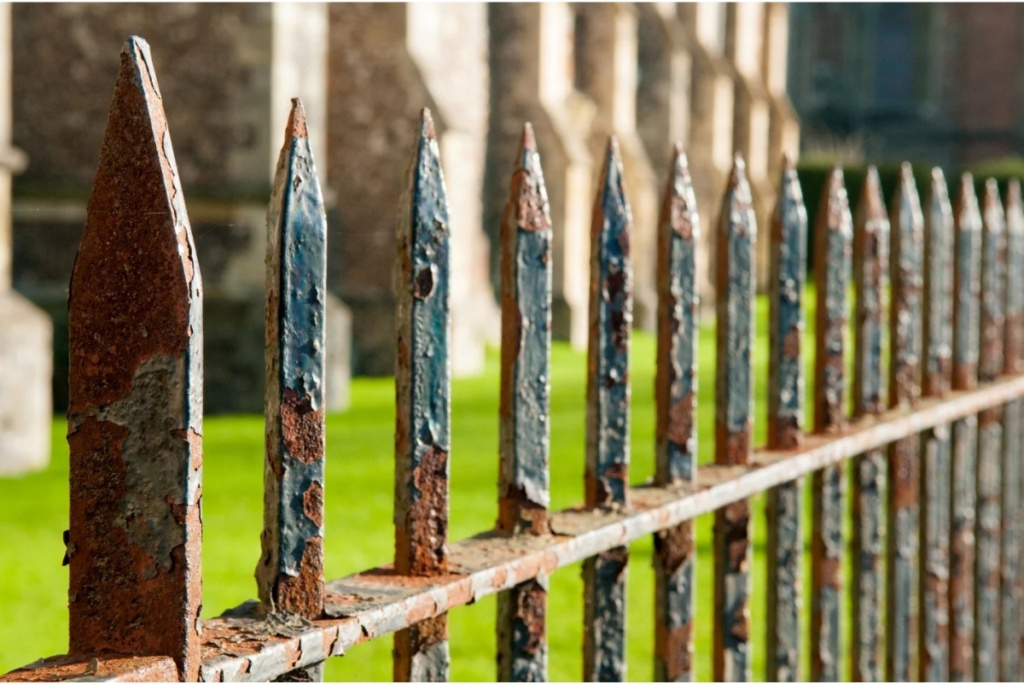Your fence does a lot for your property – it provides security, privacy, and adds to the overall curb appeal of your home. However, like anything subjected to the elements, it can wear down over time. Fences don’t last forever, whether due to age, weather damage, or general wear and tear.
So, how do you know when to replace your old fence? Here are seven clear signs that you shouldn’t ignore and get help from a fencing company.
7 Warning Signs It’s Time to Replace Your Old Fence

1. Cracks, Splits, or Warped Wood
If you have a wooden fence, cracks, splits, and warping can occur over time, especially in areas where the wood is frequently exposed to moisture or intense sunlight. These issues are prone to wooden fences, and they can significantly weaken the structure.
When you notice cracks in the wood or if sections of your fence start to warp or bend, it’s a sign that the fence has started to degrade. While minor repairs may seem tempting, it’s time to consider a replacement if these issues cover a large portion of the fence. Wooden fences that are severely damaged may compromise the security of your property, and repairing them often becomes more costly than a complete replacement.
2. Frequent and Costly Repairs
If you constantly repair the same issues—be it broken slats, nails popping out, or posts shifting—it’s a sign that your fence is reaching the end of its life. Ongoing repairs require both time and effort, and the costs can quickly accumulate.
Instead of spending money on temporary fixes, replacing the entire fence might be more cost-effective. This will save you money in the long run and avoid the hassle of frequent upkeep.
3. Leaning or Sagging Fence
One of the most obvious signs that it’s time for a new fence is when it starts to lean or sag. If your fence is tilting to one side or no longer stands straight, the problem is likely with the foundation or the posts.
Leaning is usually caused by weakened or rotted posts, which are crucial for the fence’s stability. If you try to reinforce the posts or prop the fence back up, it may not stay upright long. Replacing the fence ensures it remains sturdy and reliable for the long haul.
4. Rust or Corrosion on Metal Fences
Metal fences, particularly steel ones, are vulnerable to rust and corrosion when exposed to moisture. Over time, rust can damage the fence’s structure, weakening it and potentially jeopardizing the security of your property.
If your metal fence is visibly rusted or corroded, it may be time to replace it. While certain parts of a rusty fence can sometimes be repaired, excessive rust can significantly reduce its strength. Think about replacing the fence to maintain its durability and functionality.
5. Pest Infestation
Wooden fences are a common target for pests such as termites, carpenter ants, and rodents. If you notice signs of pest activity, such as holes in the wood, hollowed sections, or evidence of termites, your fence has been compromised.
Even if you’ve attempted pest control treatments, once a fence has been infested, the damage can often be too extensive for repairs to be effective. Replacing the affected sections or the entire fence is the best way to prevent further damage and avoid additional pests on your property.
6. Deteriorated Aesthetic Appeal
A fence is a prominent feature in your yard, and if it looks old, chipped, or faded, it can negatively impact the overall appearance of your property. While some homeowners may choose to repaint or stain their fence to improve its look, older fences that have lost their visual appeal may need to be replaced entirely.
Fences that are visibly damaged or have suffered from years of neglect can detract from the curb appeal of your home. Replacing your fence with a new, stylish option can not only boost your property’s value but also enhance the overall aesthetics of your yard.
7. Changes in Local Regulations or HOA Rules
If you live in a neighborhood with a Homeowners Association (HOA) or if local regulations dictate the type of fencing that is allowed, it’s possible that your existing fence no longer complies with these rules. Changes in zoning laws or HOA guidelines regarding fence height, material, or style may require you to replace your old fence.
Before making any changes, check with your HOA or local authorities to ensure that your new fence meets the necessary guidelines. Failing to comply with these rules could result in fines or the need to tear down the new fence.
Ready to replace your old fence? Contact Vilo Fence today for a consultation, and let’s help you choose the best fencing option for your home. Don’t wait until further damage occurs – get your fence replaced today!
Conclusion
In conclusion, your fence is an essential component of your property, providing security, privacy, and visual appeal. If your fence is showing signs of significant wear, such as cracks, leaning, or pest infestations, it may be time to replace it. While repairs may offer a temporary fix, replacing the fence ensures long-term stability and a more attractive, secure property. If you’re unsure whether it’s time to replace your fence, contact Vilo Fence for a thorough inspection. They can help assess the condition of your fence and recommend the best course of action to meet your needs.
FAQs
Q1. How long does a fence last?
Ans. The lifespan of a fence varies based on the material. Wooden fences generally last 10 to 15 years, while vinyl and metal fences can endure for 20 to 30 years with proper care. Routine inspections can help identify the optimal time for a replacement.
Q2. Is it possible to repair my old fence rather than replace it?
Ans. Minor repairs, such as fixing broken slats or tightening posts, can extend the life of your fence. However, if the damage is widespread or structural, replacement is often the most cost-effective and reliable option.
Q3. How much does it cost to replace a fence?
Ans. The cost of replacing a fence varies depending on the material, size, and design. Contact Vilo Fence for a personalized quote.






